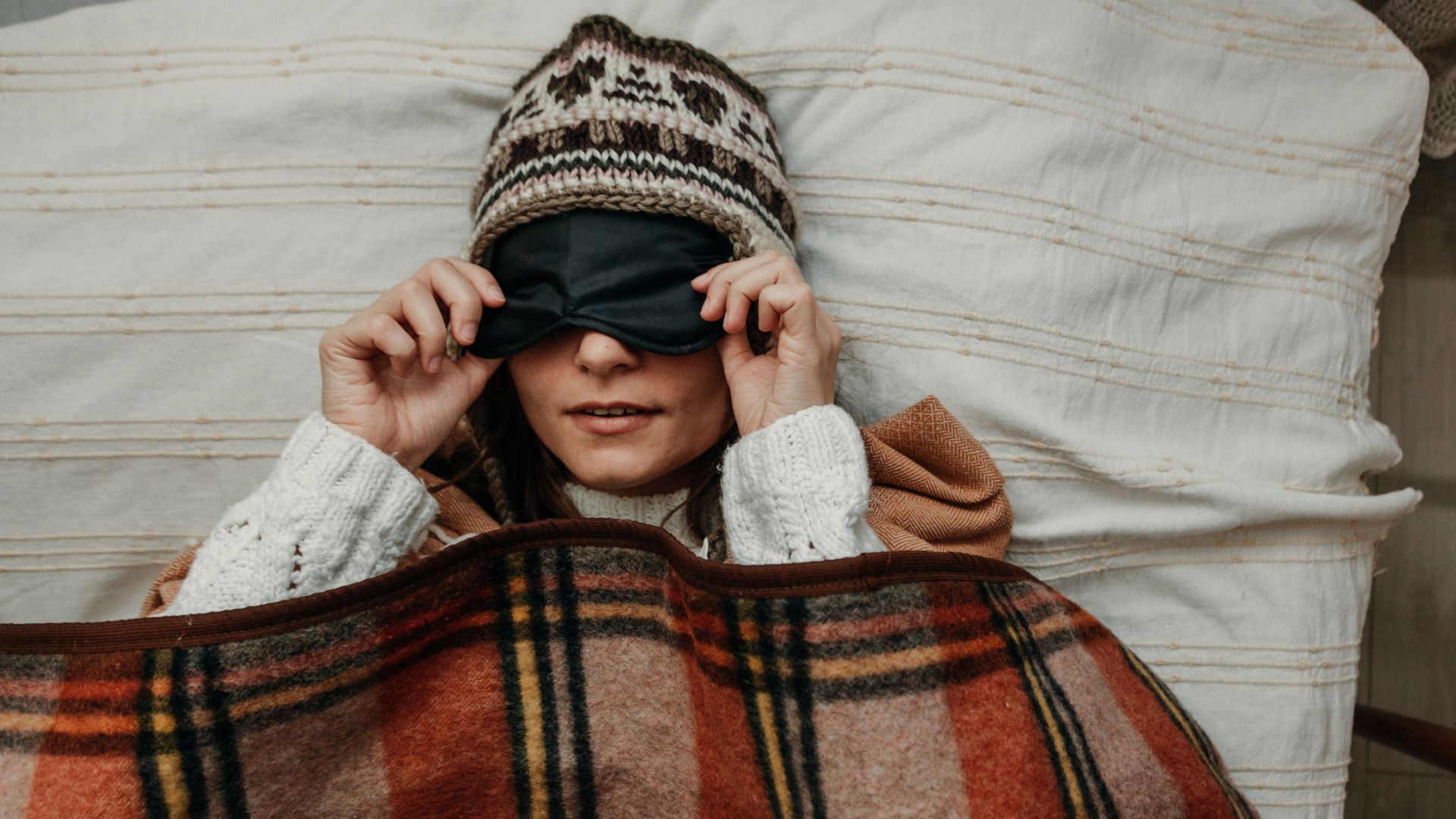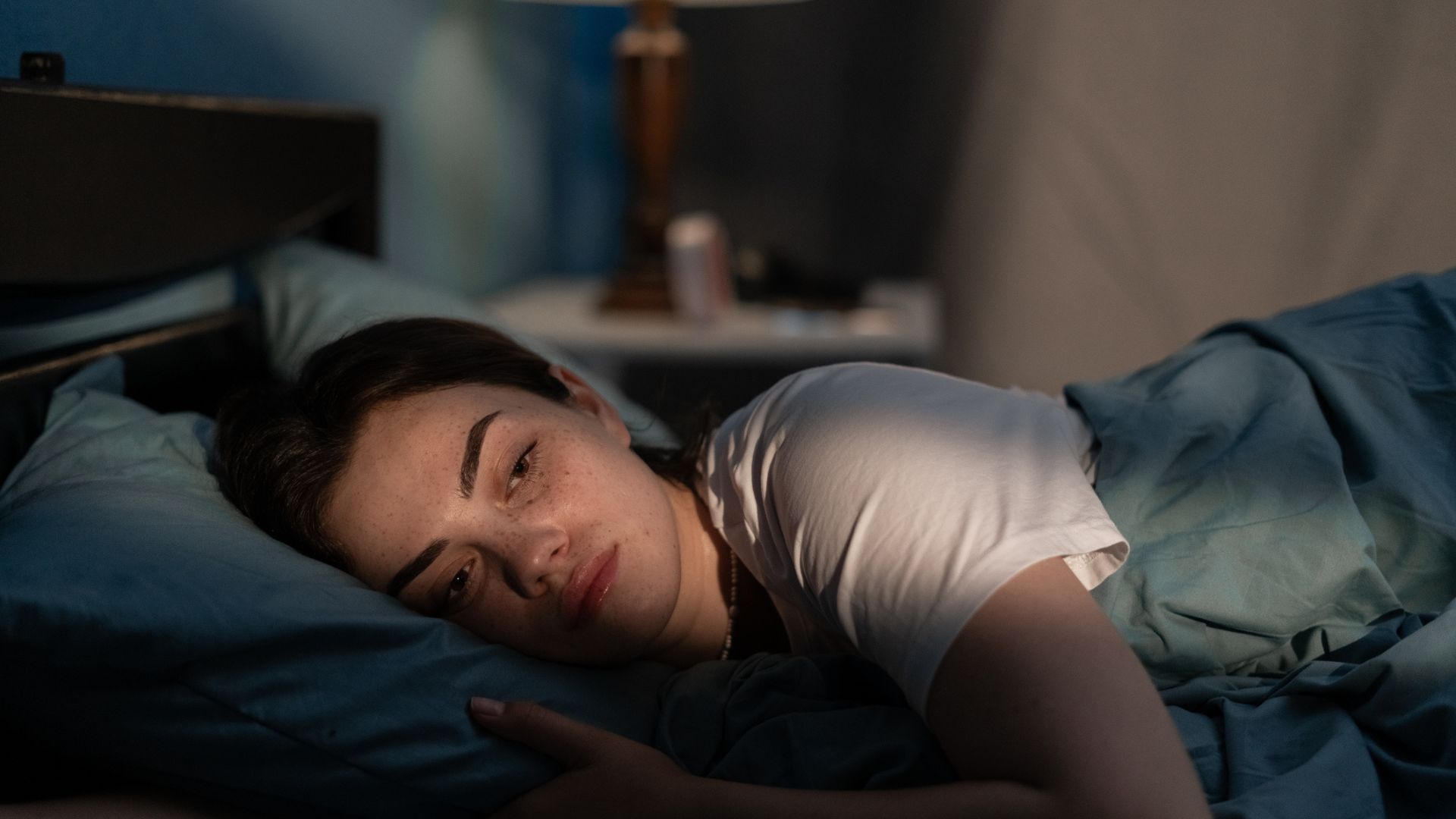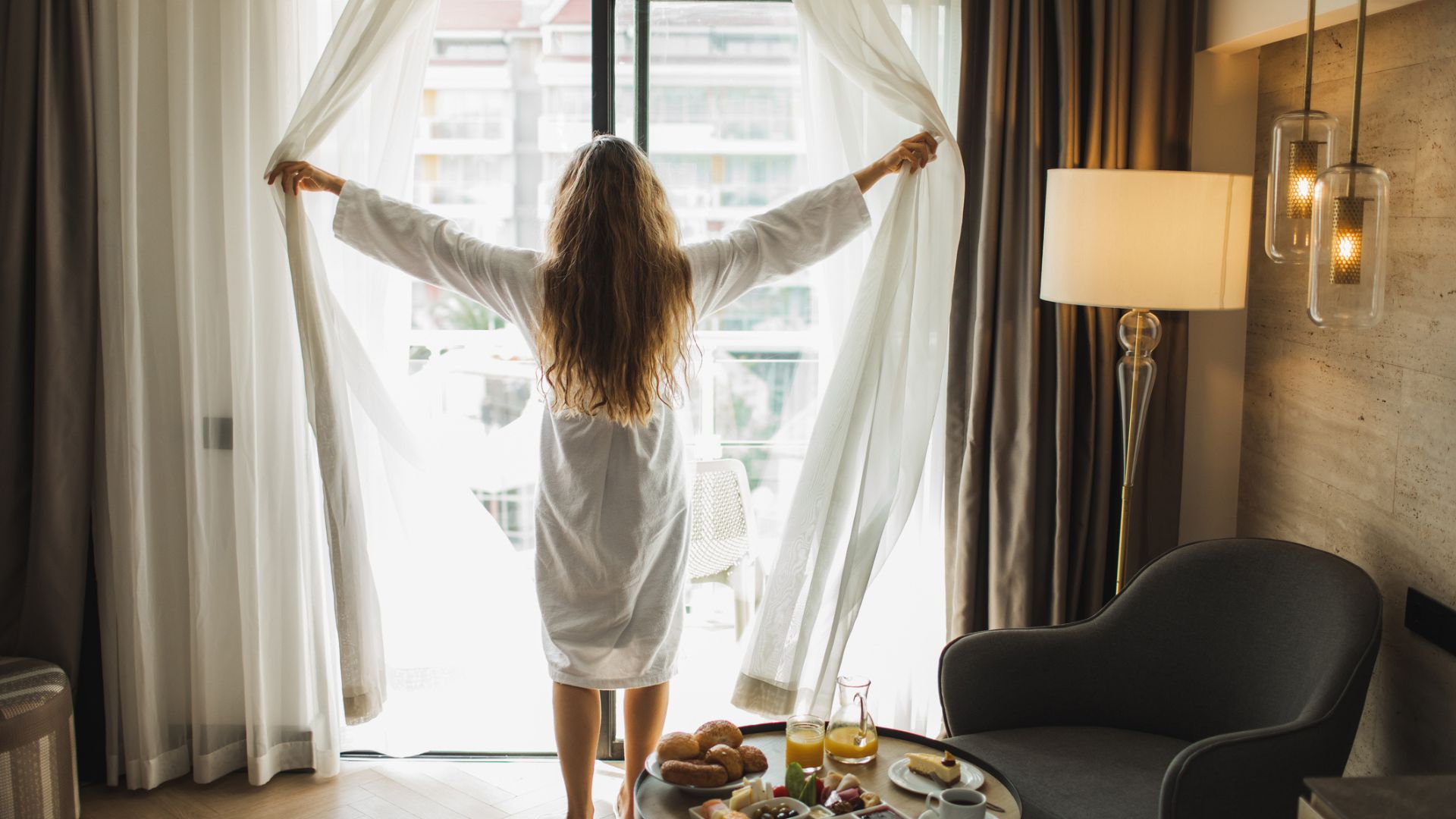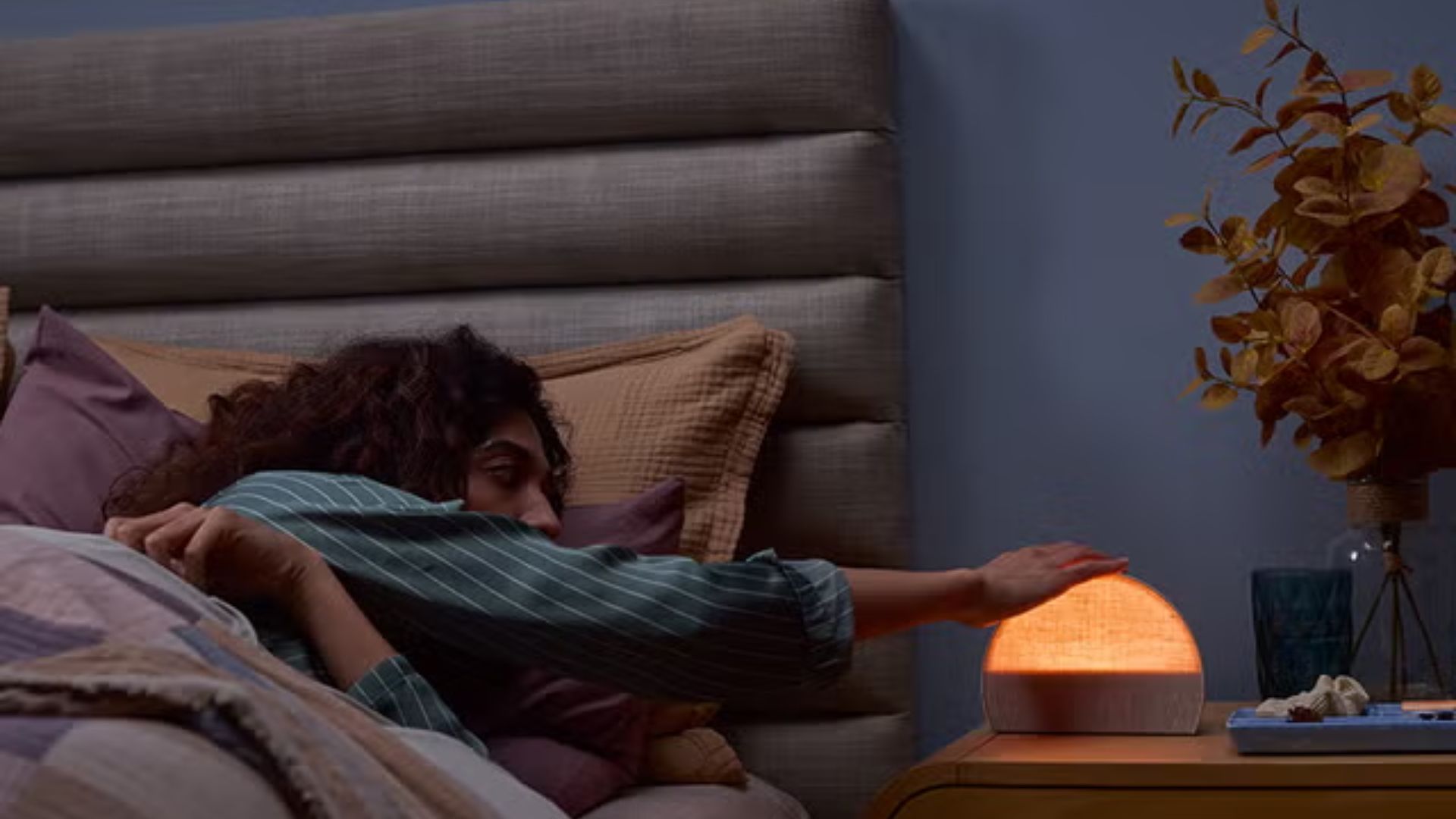It's more difficult to sleep in winter — 7 expert tips for better rest
Sleep well during the cold season with these tips

With longer nights and dark mornings, it can be tricky to sleep well during the winter. The reduced daylight hours can bring on Seasonal Affective Disorder (SAD) in some people, which is a type of depression that typically occurs in fall and winter.
The American Academy of Sleep Medicine describes SAD symptoms as including mood changes, sleep disturbance including insomnia, sleeping more and fatigue during the day, as well as social withdrawal and feelings of increased sadness. Alongside the potential to experience SAD, winter can be a tricky season for sleep anyway, with temperature changes and a lack of daylight wreaking havoc with our usual sleep routines.
For some, struggling to sleep only lasts a short while as we transition into winter, but for others it can last for months and happens every year. Luckily there are things you can do to help banish the blues. From faking daylight to making simple switches in your bedtime routine, we investigate seven ways to improve your sleep during the colder months.
Why do people struggle to sleep in winter?
While there isn't yet a definitive answer to the question of what actually causes SAD – also called the ‘winter blues’ – studies have shown that it has been linked to reduced serotonin, a chemical found in the brain that helps regulate our moods, according to the National Institution of Mental Health (NIMH).
It is thought that sunlight helps increase our serotonin, so with reduced daylight hours in the colder months, it is natural that this could affect our serotonin levels, and therefore, our wellbeing. Researchers have also found evidence to indicate that this type of winter depression can also affect the production of melatonin, the chemical the body produces to help us sleep.

According to NIMH, winter SAD can last up to four or five months, starting in early winter and lasting until the season changes and the days get longer. With a change in our melatonin and serotonin levels comes a change in our sleep. Reduced serotonin can make us feel groggy and lethargic during the day, while reduced melatonin can make it more difficult for us to fall asleep and stay asleep.
7 ways to get better sleep in the winter
If you think you might be experiencing the 'winter blues' and have noticed changes in your sleep as a result, there are some things you can do to help.
Sign up to get the BEST of Tom's Guide direct to your inbox.
Get instant access to breaking news, the hottest reviews, great deals and helpful tips.
1. Get plenty of natural daylight

Getting enough natural daylight is essential, especially during the cold winter months. Natural light helps the body produce vitamin D, which is needed for healthy bones, teeth and a strong immune system, and, according to UCLA Health, research has shown that exposure to sunlight can boost our moods and improve our wellbeing.
Even a quick walk outside at lunchtime can help us get our dose of daylight. However, if you can stay out for longer, the National Sleep Foundation suggests trying to get an hour of natural light during the day, as this helps support the body’s circadian rhythms, alerting us as to when we should be awake or winding down for sleep.
Unsurprisingly, getting a dose of daylight can help your body remain feeling wide awake when you need to be alert and sleepy as the evening draws, which can help avoid those energy lulls on winter days and help you fall asleep faster at night.
If it’s tricky to get outdoors, keep the curtains in your home open to ensure enough sunlight gets in, as this will help support your energy and mood.
2. Create a nighttime routine
A good nighttime routine helps prepare the body and mind for sleep. Research has shown that the blue light from screens can decrease melatonin production, the hormone that indicates to our body that it's time to sleep.
So, any wind-down should include ditching the screens for at least an hour before going to bed. Alternatives can include reading a book or listening to relaxing music instead to help the brain switch off more effectively.
If worries or your to-do list keeps you awake at night, jotting down notes in a journal before you get into bed can help clear your mind and switch off for the night. Other ways to prep for sleep include taking a bath or shower, doing some gentle stretches, having a cosy pair of pajamas and trying guided meditations.
3. Eat the right foods to promote good sleep

It’s no secret that what we do during the day has an impact on how well we sleep at night, and that includes what we eat. According to a nutritional epidemiologist from the University of Michigan, studies have found that certain foods, such as those high in saturated fats and refined carbohydrates can have a negative impact on our sleep quality.
Instead, we should consider choosing meals that include plenty of fruit, fibre, vegetables, berries and dairy as those have been associated with better slumber. Eating at set mealtimes during the day, rather than snacking, is also likely to help with your sleep.
You should also avoid large meals, sugary snacks, caffeine and alcohol before bedtime, as these can contribute to difficulty getting to sleep and disrupted sleep patterns. Including plenty of vegetables, legumes, fruits and whole grains in your diet can improve your sleep overall, according to research carried out by the University of Michigan.
And though it's generally better to avoid eating too close to your bedtime, if you do feel peckish in the evening, Northwestern Medicine suggests choosing light snacks such as yogurt, berries, almonds or banana, as well as non-caffeinated non-sugary drinks such as herbal tea.
4. Keep your room cool
The key to maintaining good sleep hygiene (i.e. your habits and environment that make you sleep better) includes the conditions in your bedroom. As well as having the best mattress and best pillow to suit your sleep style, keeping the lights dim and the clutter to a minimum will help you rest, as well as ensuring the temperature is cool.
It’s easy to assume that a warm and toasty bedroom is better for sleep during the colder seasons, but keeping your sleep environment cool will help you sleep more deeply and prevent you from waking during the night. Research has shown that cooler temperatures are related to increased production of melatonin, the hormone that tells our body its time to sleep.
The ideal temperature for sleep should be around 16-19C (or 60-67F). If you think you might get too chilly, add an extra blanket or wear bed socks as these are easy to remove if you do get too hot.
5. Try breathing exercises

Breathing exercises are easy to do and can relax you and help reduce symptoms of anxiety at bedtime (or any time!). This, in turn, can help with falling asleep faster and can lull you back into slumber more quickly if you wake during the night.
There are several different breathing techniques you can try, including: belly breathing where you place your hand on your abdomen as you slowly inhale and exhale. Another option is ‘4-7-8’ breathing, where you breathe in through your nose for four seconds, gently hold your breath for seven seconds and breathe out through your mouth for eight seconds, repeating for four cycles.
'Box breathing' is a method that involves imagining the four sides of a box and then breathing in for four seconds, holding that breath for fours seconds, breathing out for four seconds and holding your breath for a further four seconds. This method can be repeated for as long as you wish.
While it might take a while to find the exact breathing technique that suits you, these exercises can induce a calmer state of mind ahead of your sleep.
6. Use a sunrise alarm clock
One of the trickiest aspects of winter months is the darker mornings, which is where sunrise alarm clocks can have a really positive impact. Not only do they typically look great, a simulated sunrise can, to some degree, “help with resetting the inaccurate organization of body clock functions relative to sleep occurring in winter,” according to research from BMC Psychiatry.
This means that the clock will help to support your natural circadian rhythms during the winter months, instead of finding yourself jerked awake in the darkness by a jarring alarm clock in the morning.
Set the clock to your preferred wake-up time and be gradually awakened by gentle light that mimics the rising sun ahead of that, in some cases these alarm clocks even use a range of different colors to create a more realistic sunrise.
Many sunrise lamps also come with extra features such as a selection of alarm sounds inspired by nature, as well as guided light meditations to help you fall asleep (some even have a sunset feature that mimics the sun going down). If you experience SAD, choosing one of the best sunrise alarm clocks can be a great addition to your sleep routine, though it's worth looking for one that is specifically designed to help with the symptoms.

7. Use a light therapy box
A light therapy box is a device that simulates natural daylight, and according to the Yale School of Medicine, research has shown that "exposure to bright light at 10,000 lux for 7 days per week for 30 minutes before 8 a.m. results in substantial improvement in SAD," for most people.
Light boxes are typically easy to control and can be placed anywhere in your home to bring in the daylight during the darker winter months.
However, they work differently to regular lamps as they are designed to shine brighter in order to simulate the sun. Harvard Health recommends using a light therapy box for 30 minutes as close to the time you wake up as possible. We've found the Lumie Vitamin L Light Box to be effective, but the Yale School of Medicine also suggests other light boxes that will ensure you get the required intensity of light.
Grace is an experienced sleep writer and mattress reviewer who also contributes to our sister site TechRadar, among other Future plc brands. She's a big fan of organic sleep products and has recently invested in a wool mattress topper that she quite happily describes as "life-changing." (Hey, we're serious about our sleep products). When she isn't testing mattresses or writing about sleep, Grace enjoys reading and creative writing, and incorporates meditation and yoga into her wellness routine.

